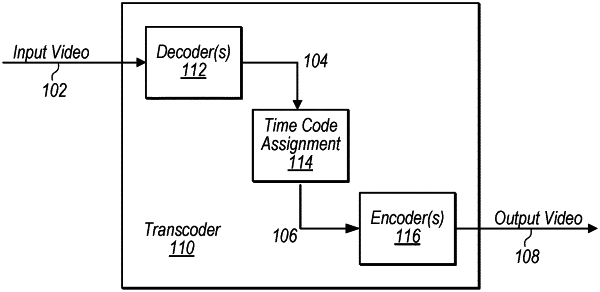| CPC G11B 27/3036 (2013.01) [G11B 27/022 (2013.01); G11B 27/034 (2013.01); H04N 21/8547 (2013.01)] | 20 Claims |

|
1. A system, comprising:
one or more computing devices configured to implement a transcoder configured to:
receive video;
determine whether the received video is variable frame rate or non-variable frame rate;
assign, based on a determination that the received video is non-variable frame rate, timecodes to each frame of the received video using a standard timecode technique; and
assign, based on a determination that the received video is variable frame rate, a new timecode to each frame of the received video using a variable frame rate timecode technique, wherein for one or more time periods of the received video processed using the variable frame rate timecode technique, a time period portion of the time code increments to the next time period even though an index portion of the time code has not reached a point at which constant frame rate video processing would go to the next time period.
|